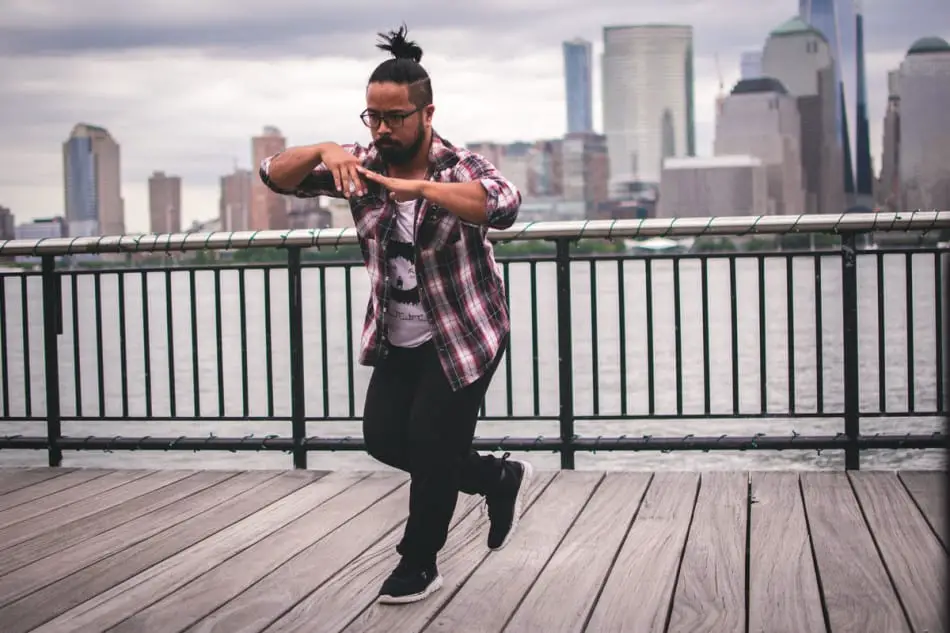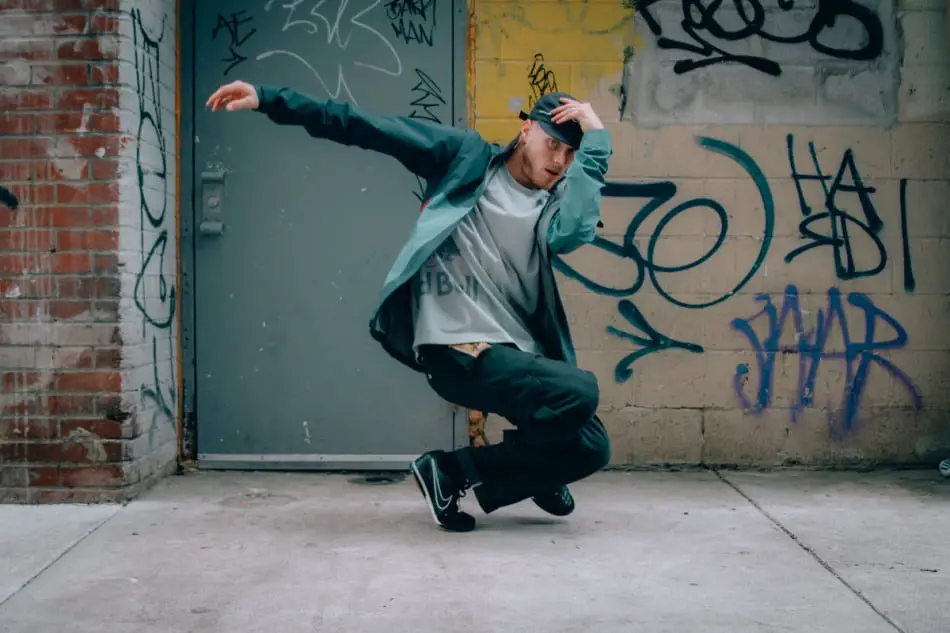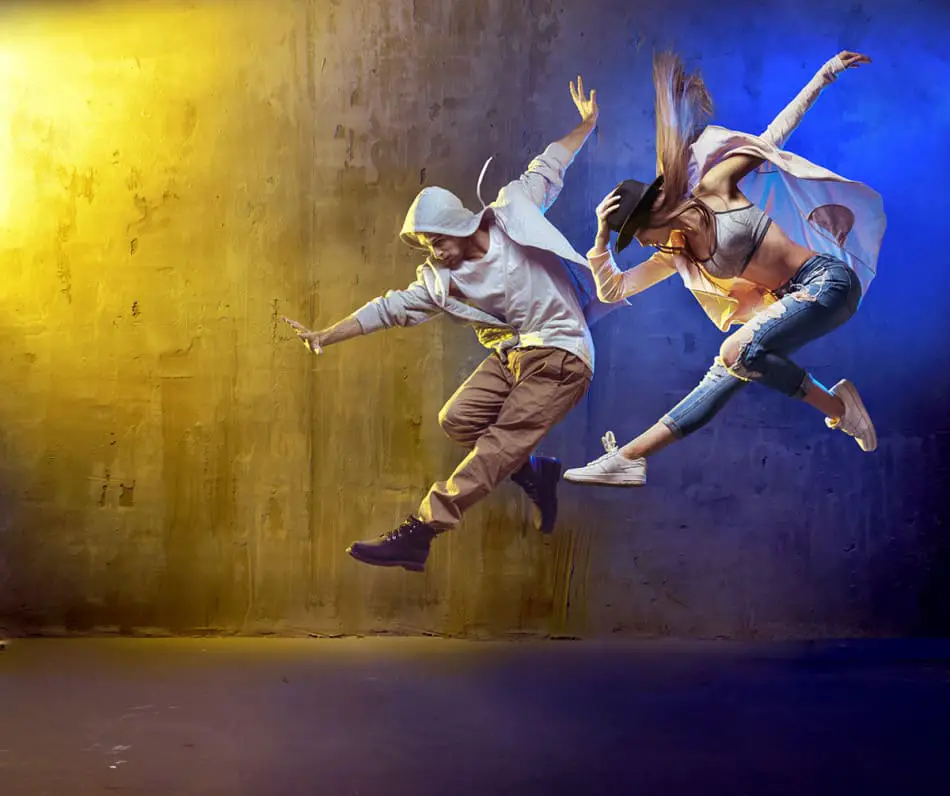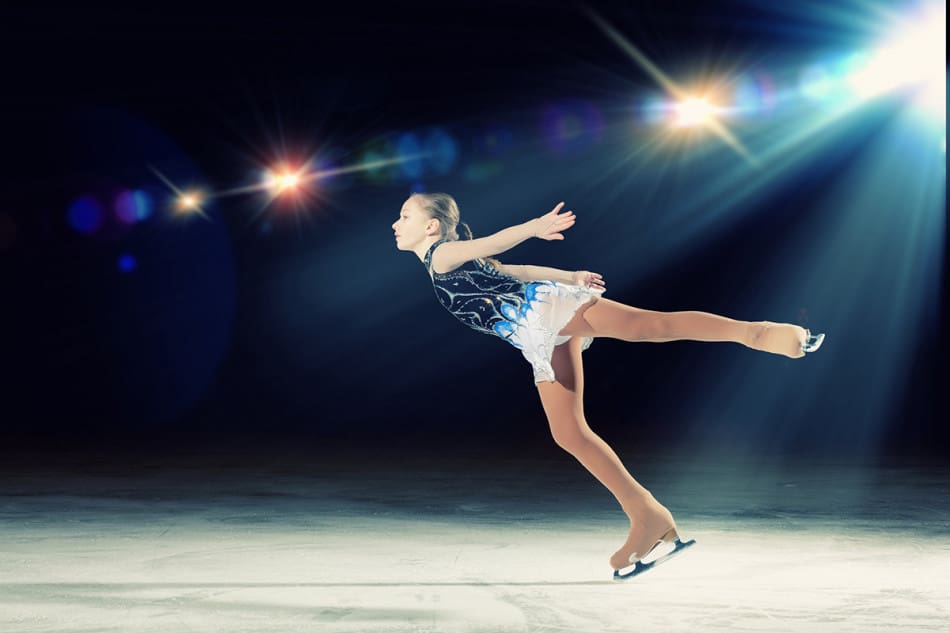The breakdance, a widely loved and very popular pop culture dance routine, has evolved since its arrival on the dance scene in the 1960s.
If you are wondering if this dance can be self taught, read on.
You can teach yourself to breakdance through the use of endless online informational resources. Start by understanding the basic steps involved in breakdancing, then learn the fundamentals and practice regularly.
Learning how to breakdance is simple once you know the right steps.
This article reveals useful books, videos, tips, and reputable sources that will help you learn how to breakdance.
-> Read Also What Is An Autodidact?
How to Learn Breakdance in 3 Easy Steps
Here’s a 3-step process for teaching yourself to breakdance.
Step 1: Learn the Basic Concepts and Elements of Breakdancing

The three fundamental types of moves used in a breakdance routine are
- Top rocks
- Footwork, and
- Freezes
1. Top rocks
This is the fundamental building block of breakdancing.
When performing top rocks moves, your arms, hands, elbows, and chest will aid in moving the upper part of your body.
Also, remember that Top rocks are used to kick off a breakdancing routine, and you should begin your practice with some top rocks before progressing to more advanced moves.
FInd the video on how to toprock below.
2. Footwork
The footwork is a kind of leg movement dance. Your feet, back legs, and hips will be used to dance here.
This movement should be performed at the latter part of the breakdance routine as it is typically much more complicated than top rocks and facilitates limbic movements.
Additionally, the lower half of your body must move when doing footwork.
The video below is a compilation of 50 footwork variations you need to get familiar with
3. Freeze
Any breakdance routine without the “Freeze” is incomplete. The freeze is a temporary halting movement done while breakdancing before proceeding to the next move.
To further explain the freeze, consider Glissandro, the transition from one key to the next, representing the breakdance, and the freeze to be different keys in a piano piece.
When one key freezes, another continues to produce a sonorous flow.
When you finish a breakdance move, you should perform a freeze, before moving to the next move.
Watch the video below to get an idea of how to include the Freeze technique in your breakdance
Step 2: Get Familiar With the Coffee Grinder Technique
The coffee grinder is another simple foot styling technique. It also goes by the names helicopter and propeller. To perform this move, crouch close to the ground and spin.
How to Perform the Coffee Grinder Technique
- First, begin by getting down on all fours with your legs in a split position. The split legs are comparable to the crunch workout position.
- Next, stretch your right leg to the side as far as it can comfortably go.
- Once you achieve this, turn your right leg, so it is in front of you.
- Now, maintain a steady motion while keeping your hands on the ground and raise your right hand long enough for your right leg to pass through. Repeat this process anticlockwise.
- Finally, hop a little with your left foot, then cross your right leg over your left foot. Then, get back into the initial crunch position.
You can go through this spinning process as often as you want until you’re comfortable. Then, increase your speed and alternate directions from time to time, spinning with your left leg instead of your right.
Step 3: Practice the Three-Step Technique
The three-step technique is one of the most basic breakdance footwork styles. However, it encompasses every aspect of breakdancing and can later be used as a springboard for many more challenging moves.
Learning the three-step process will go a long way if you’re getting started as a breakdancer.
- Start by extending your arms and legs in front and bending it at the knees. Next, assume a crab walk position.
Tip: Ensure you lift your body a little bit off the ground.
- Next, step forward with one foot while using the other to support your weight. To alter your position, pull your leg to your body. Your hands and feet should be on all fours. In this position, ensure your body is raised higher than it would be if you performed a push-up.
- Now, kick your left leg to the side, distributing your weight so that your right leg and arms bear the weight. Change the stretched-out leg. Kick out your right leg while bringing your left leg to your knee. Raise your right leg to your previous push-up position.
To get a clear picture of the 3-step breakdance process, check out this video
Key Takeaways:
- Regular practice of the 3-step guarantees that after a while, the routine feels natural
- Start in a push-up position till you balance your limbs on the ground
- Learn to move your legs swiftly and alternate between your two legs.
Once the three-step process is complete, you can repeat it in successive cycles to create a steady flow. It would be best if you kept practicing these three steps to improve your skills.
-> Learn More about Self-Learning vs. Classroom Learning: Which Is Better?
Self-Help Materials on How to Breakdance

Many resources are available to help you learn how to breakdance. However, do note that some are more informative than others.
In this section, we’ll be discussing the best resources and available materials.
Online Videos
There are a lot of videos online. Typical examples are YouTube instructional videos and movies. These videos are fun to learn and give fun ideas for routines you can practice independently.
There are also video courses available on learning platforms like Udemy that can help you.
If you’re unsure which videos to watch, start with the Step-Up franchise, which consists of eight films: Step Up (film) – Wikipedia.
You can also find simple breakdancing tutorials and beginner guides on YouTube here:
- How To Breakdance For Beginners
- 5 Easy Breakdance Moves Everybody Can Learn | 𝐕𝐈𝐓𝐀𝐋𝐈𝐓𝐘
- Beginner Breaking Moves Check List | Full Move List Of Beginner Breakdance Fundamentals To Master.
Key Takeaways
- The “baby freeze” and “helicopter” moves are cool, and dynamic breakdance moves you can easily learn.
- Breakdance requires some level of aesthetics, so practice your stunt skills.
- Your hand and leg movements should tally together.
- Practice consistently, and you’ll see a fast turnaround in your breakdance skills.
-> Learn more about the 7 best websites for self-learning
Breakdance Books
Pushing your imagination to create routines that fit you and your ideas is integral to learning how to breakdance. But, again, books are an excellent source of information.
If you don’t know where to get books on how to breakdance for beginners, you can get them here: Amazon.com: Learn to Breakdance: Completely Street Instructional.
Breakdance Events
It is not enough to learn in the comfort of your own home or studio; it is also necessary to observe and learn from other dancers.
Attend dancer-organized events and breakdancing sessions, compete in dance competitions, and possibly enroll in a dance school to see new techniques.
These would be extremely beneficial to you.
Frequently Asked Questions
Q: How Long Does It Take to Become a Good Break Dancer?
The time it will take to become a good break dancer depends on how much time you devote to learning how to break dance and how quickly you pick up routines.
That being said, you should notice positive improvements in your break dancing at the end of your first month of practice.
Q: Do I Need to Be a Dancer to Learn Breakdance?
You don’t have to be a dancer to practice and learn breakdance. While basic knowledge is beneficial, it is not required and should not be used to discourage you from beginning your break dance journey.
As you research, you will eventually acquire this knowledge to become a better break dancer.
Final Thoughts
Breakdance is a dance style that has been around for a long time, and doesn’t look like it’s going anywhere anytime soon.
To start on your breakdance learning journey, just follow the steps in our article or check out some of the resources listed.
Do not forget to stay up-to-date with new moves and ensure you practice regularly.
References
- https://www.wikihow.com/Teach-Yourself-to-Breakdance?amp=1
- https://www.learntodance.com/breakdance-lessons-online/
- https://www.howcast.com/guides/998-how-to-break-dance
- https://www.amazon.com/How-breakdance-step-Breakdance-Choreographers/dp/1072916002
- https://www.redbull.com/ca-en/understand-the-basic-elements-of-breaking






